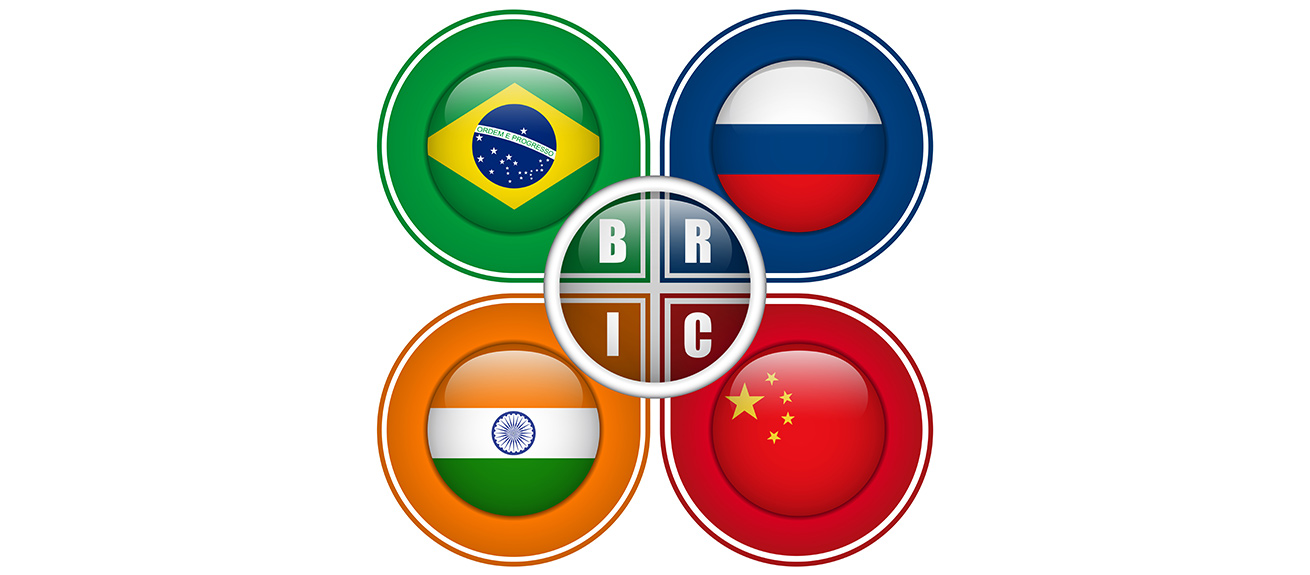43 participants attended a Discovery Event on trends in emerging economies in the context of the global economy and the opportunities and challenges of developing business in these markets, the approaches required in this increasingly complex and changing environment, and how multinationals can fundamentally reintegrate their activities to deliver compelling value propositions to their target audience.
Emerging economies in the global world
In the 21st century, the world economy is characterized by greater complexity, interdependency, velocity, transparency and diffusion of power. For example, although the current financial crisis originated in the US, it has significantly impacted most of the world economy over the last five years and sparked a confidence and sovereign debt crisis in the Eurozone. Many factors led to the crisis, including poor corporate governance and regulatory oversight. Indeed, it seems that existing multilateral institutions are no longer “fit for purpose” because they are not delivering the promised results. The WTO, for example, is failing to promote global freer trade, as illustrated by the deadlock in the Doha Development Agenda negotiations. At the same time things are moving a lot faster: It took the UK 154 years to double its GDP from $1,300 (PPP); it took China just 12.
Another megatrend currently reshaping the world is the increased importance of emerging markets in terms of policy (more regional and international cooperation and political blocks), economy and demographics.
While most developed countries continue to suffer the negative consequences of the European crisis, developing economies are leading economic growth. According to IMF forecasts, the highest economic growth in 2013 is expected in the developing countries, particularly in Africa and South-East Asia. Indeed, as recovery in developed countries is still risky and uncertain, investors are increasingly looking to developing countries for opportunities. But these markets still face several common challenges, including uneven regional development; inequality and low social cohesion; poor infrastructure and education; weak public governance and thus high formal and informal costs of doing business; and urbanization and environmental problems.
Business opportunities in Africa
Africa is increasingly on the radar of global companies, especially those in other developing countries such as China, India and Brazil, but doing business in Africa requires multiple strategies. Africa occupies 20% of the Earth’s land surface and is incredibly diverse, with 54 countries at different stages of development, more than 2,000 tribes and languages, and various cultures, demographics and economies. Understanding the differences between countries, regions and cultures is essential to take advantage of the potential and develop appropriate regional and even micro strategies.
Many perceive Africa as fuelled only by natural resources and agriculture, but although these are the continent’s largest GDP contributor (around 38%), the consumer-facing industry (wholesale, retail, finance, insurance, real estate) is catching up. It currently accounts for 27% of GDP3 and represents the biggest growth potential; it is expected to grow by over $400 billion by 2020, driven by the growing middle class, which is expected to constitute 53% of total households in 2020.4 The African population is young (40% of its 1.03 billion population is under 14 years old) and poor (60% live on $1 per day) but it is also digitized, with 70% of the population using mobile phones, mostly for calls and payments – Africa accounts for 80% of the world`s total mobile payment transactions.
Overall, the African market is highly fragmented with numerous small companies and no large, renowned global companies. The business environment is difficult and complex. The major challenges that multinational businesses face, and several participants confirmed this was also the case for their companies, is the lack of contract enforcement, underdeveloped infrastructures, unqualified local workforces and a different perception of risk. A participant from a construction company said her firm withdrew from Africa 10 years ago because the African partners did not follow the company’s strict safety requirements as they did not see why incidence ratios should be kept low. Entrepreneurs faced different challenges: mainly “low trust” in society, limited access to finance and the devastating perception of failure.
For all its difficulties and complexities, Africa offers many opportunities. It is Heineken’s highest growth segment with a profit margin twice that in Europe and the Americas. Ethiopian Airlines, renowned for accessible prices and high quality, is growing at 20% annually, which is unimaginable for any western airline. African consumers are demanding and risk-averse; they look for the best value at the lowest price. The Indians and the Chinese seem to have a better understanding of African markets, and are more willing to go into them. So it is unsurprising that many Indian and Chinese products, which are lower quality but much cheaper than European products, can be found in Africa.
Getting to know African consumers on the ground is essential. Much can be learned from speaking to end users, hairdressers, taxi drivers and other customer-facing individuals to find out about needs, segmentation, purchasing habits and pricing. Small selling outlets (kiosks), which often sell products in tiny portions, are pervasive and provide invaluable information regarding consumers and distribution channels. To succeed in Africa, you also need local decision-making.
Business opportunities in the BRICs
Other emerging economies that have been the focus of attention for the last decade are the BRICs (Brazil, Russia, India and China). They are often referred to as a unified block but are diverse in terms of their economies, policies and cultures. However, they are all large countries and are expected to contribute more than half the global GDP in 2030. Companies that are not considering these high-potential markets are missing opportunities for sustainable long-term growth.
China is the biggest and fastest growing of the BRICs. It has a unique culture, political system and economic environment, but like other large emerging economies, the level of development is not uniform across regions and cities, which are categorized into Tier 1, Tier 2 and Tier 3 cities.
Many successful Chinese companies started in regions with lower competition (Tier 2 or Tier 3 cities). Instead of investing in R&D to compete with cutting-edge technologies, they develop products and distribution systems aimed at less-affluent consumers using local expertise and existing technologies. Taking advantage of their own experience, low-cost structures and ability to quickly adjust to customers’ needs in local markets, they then expand into more competitive regions in China and other Asian countries, gradually transforming into global companies that successfully compete with multinationals.
Two major mistakes multinationals tend to make in China and other Asian countries is that they neglect local low-end market segments – which have massive untapped potential – and apply business models made for developed economies instead of developing a unique value proposition that suits the needs of underserved customers in local markets. Devising products in and for emerging markets then distributing them globally is referred to as “reverse innovation.” For example, GE invented battery-operated low-cost suitcase-size medical equipment for Asian markets but then distributed its ultraportable machines in the US for emergency services.
The secret to success in emerging markets is to invent a business model for a specific segment, with a local value proposition and a “high volume, low cost” profit formula (which will ensure sustainable growth and increasing market share), then develop locally oriented processes and use local resources to ensure high flexibility and low cost. It is also important to develop new key performance indicators, stressing customer feedback and focusing on growth rates and market share rather than just profit. Localization is especially important. KFC broke into the Chinese market by offering localized menus that varied across regions. Its sourcing and logistics operations also differed according to the local infrastructure. It has been opening one store per week and aims to open over 3,000 in total. Novartis and IBM are building local R&D divisions to take advantage of local knowledge and develop products that perfectly suit local needs in their respective markets.
Brazil is the fifth biggest country in the world by territory. It is now an urbanized society with 87% living in cities, mostly along the coastline. The country is facing the usual emerging economy challenges but, following several economic crises from the mid-1980s to the mid 1990s, the government implemented major structural reforms in all areas, including business and education. Currently, Brazil is the only country among the BRICs to experience a decreasing income inequality ratio (as measured by the Gini coefficient). This was partly facilitated by government policies, investment in basic education, and a quick demographic transition. Technological developments that allowed the expansion of the agricultural frontier to some of the poorest states (Maranhâo, Pauí, Tocatins, Bahia, the so-called MAPITOBA region) also helped with this process. The demographic transition was an unintended consequence of modernization as radically improved satellite and TV coverage allowed rural dwellers to watch soap operas about upper-middle-class urban families with few children, prompting poorer rural populations to emulate the behaviour they observed in the soaps.5 Had the Brazilian government tried to provoke that change explicitly, it may not have succeeded.
Despite these successes, it is the least integrated of the BRICS in the global supply chain because of its relatively closed and tough business environment (the World Bank ranked it 130 out of 183 countries in terms of ease of doing business in 2012), a complex regulatory framework and an underdeveloped infrastructure. Even its recently booming bilateral trade with China (which grew 20 times during the last decade) is more a North-South type relationship, with Brazil exporting primary resources to China and importing higher value-added manufactured products.
Agriculture and agribusiness currently represent 22% of Brazil`s GDP and 40% of exports. The sector has been radically transformed by significant R&D investments in agribusiness by both the government (with Japanese technical cooperation) and large companies, including international investors. Accelerated development of agricultural technologies is also enabling the Brazilian government and companies to transfer their technologies and invest in agriculture in Africa. Brazil continues to benefit from development of its agro technologies and expanding international trade but also greater political influence in the African region.
The potential of Brazil’s agricultural sector is huge. International food prices have increased significantly over the last decade and the demand for agricultural products will continue to grow in view of global demographic trends. A lot more land can still be used for agriculture in the so-called “agriculture frontier.” Agricultural companies are buying this land cheaply, then increasing its productivity using modern technologies and investing heavily in infrastructure. This allows them to resell the land at much higher prices and move further outside the frontier to repeat the process. As a result, property prices are increasing, especially in these regions.
Conclusion
To survive in the changing economy, multinational companies need to think aboutentering and expanding their business in developing countries to tap the growing middle-class consumer market and ensure long-term competitiveness and survival. To succeed they need to understand the needs of locals, use local know-how and resources and apply new, highly flexible business models to offer a locally adapted and compelling value proposition. Thereafter they can consider how to export these products to other markets in both developed and developing countries.
Discovery Events are exclusively available to members of IMD’s Corporate Learning Network. To find out more, go to www.imd.org/cln










